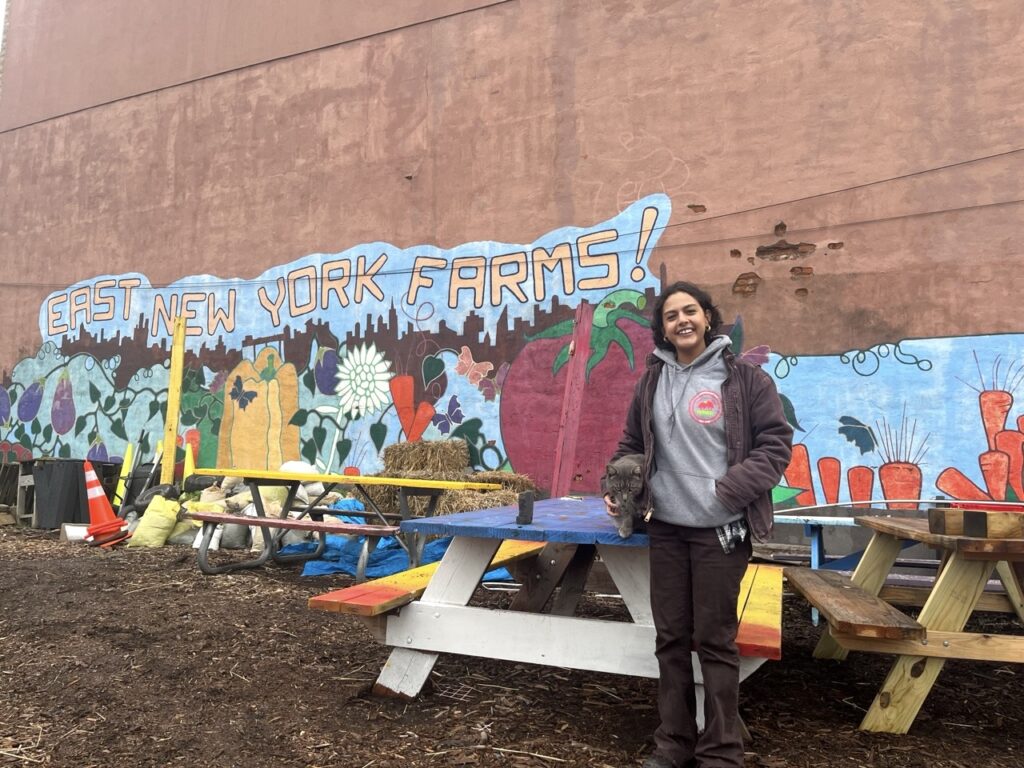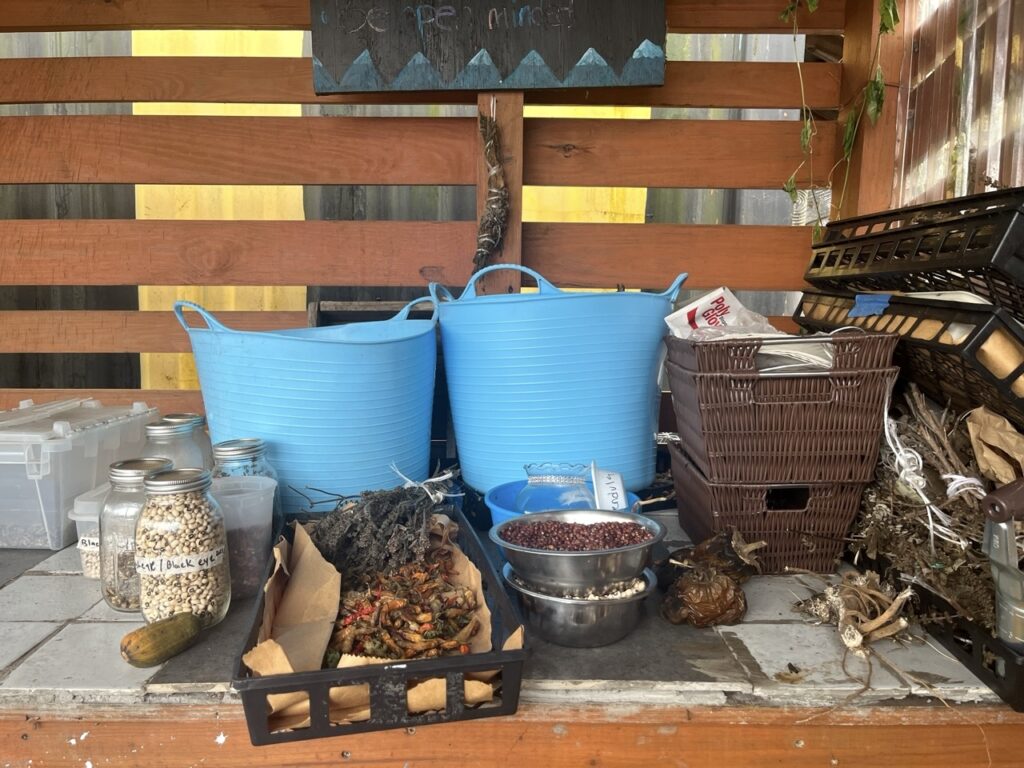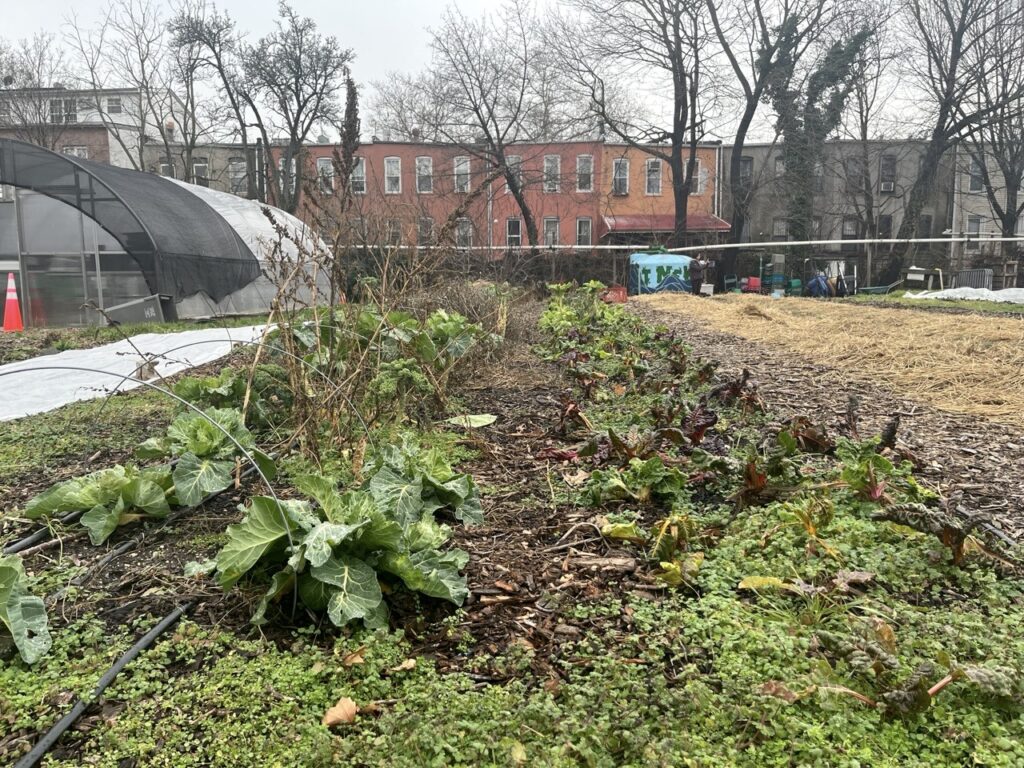The Many Different Hands at East New York Farms! with Sol Bacio
By LinYee Yuan for Field Meridians

We visited the farm with Sol Bacio, assistant project director, during this quiet, gray week to learn more about the work of the community. — LinYee
Sol Bacio: We have our two, half-acre farms: the Youth Farm, where we are now, and Pink Houses with NYCHA, which serves a lot of community gardeners and is comprised mostly of raised beds. We also have two smaller gardens: Fresh Farms, around the corner from here on Livonia, and Spring Creek, which we’re just about to open.
Yesterday there was a soil delivery—it’s here in our kitchen. We use this space for workshops, like a wellness workshop where folks made fire cider. And in the summer we’ll cook with our interns here every Friday—one group will harvest from the farm, and the other will cook a recipe we planned out for them. We also do seed saving here.

Alexx, our farm manager, is passionate about seed saving—in the fall they grow certain crops to go to seed. We work with True Love Seeds who sell our seeds and distribute them. We grow a lot of culturally relevant crops like bitter melon—smooth and rough—which is big with our Caribbean community members. We also save pigeon peas, ‘fish eye’ blackeyed peas, calendula, hot peppers (like our scotch bonnets) and callaloo. These herb bundles are part of the interns’ exit project. Alexx led an herbalism topic and taught them how to pick, dry, and bundle herbs to use in teas or to burn in ceremony.
We have a few fruit trees on the farm: our cherry tree just started producing fruit for the first time two years ago, and it’s been here for the past 25 years. We have two fig trees. One thing that we’ve been noticing is that the figs are a lot smaller than they used to be which might have to do with climate or conditions not being right.
In March we start a lot of seedlings in the greenhouse—we’re currently trying to figure out spacing. With two farms, two gardens, plus a plant sale in the Spring, it’s a lot of seeds to start. There is also cover crops growing right now—these I planted in December—and they help reintroduce nutrients into the soil. Here we had collards and kale growing and our Swiss chard looks a bit sad after the snow—I was still harvesting this in December! Early winter has taken on a new meaning. The fact that it’s January and they’re still going doesn’t feel normal for this region.

In the winter we’ve been preparing the farm—beyond planting cover crop, we are doing things like rebuilding the beds. Wooden beds are nice because the wood is affordable and easy to put together. The downside is that they don’t last—maybe just three or four years and then we have to rebuild them. We’re also doing a lot of crop planning.
Our junior staff, who have graduated high school, will also be coming back in a few weeks for training. We do public speaking training to teach them how to talk about our programs and to be ambassadors for the farm and UCC. We also teach the history of community gardening in East New York, and train them on farm practices—like how to use tools appropriately, put things away, and safety in general. And then the junior staff will help interview the first year interns who will start in April.
In terms of impact, East New York has so many gardens, a mix of community and backyard gardens—one of the most of any neighborhood in the city. One of the ways we engage that community is through our garden assistance support. We’ll bring interns to a different garden and do any tasks that are needed. A lot of these gardens are stewarded by elders and one of the struggles that the gardens have are recruiting younger participants who are interested in continuing the work. This intergenerational work teaches our interns about the history of these spaces and why they’re important. It’s also a good introduction for everyone: these are your friends and neighbors. ENYF! also helps bring visibility to all the different kinds of gardens and the work that everyone is doing here in East New York. It’s definitely not just us. There are so many different hands involved.
BONUS: Notes from Alexx Caceres, Farm Manager:
What are your most pressing considerations when planning for seed starting and farm plantings this Spring?
My consideration would be to follow the weather patterns and seed germination times. Some springs are colder than others. I usually start my seeds in mid February or March to be on the safe side. I start things that take longer to germinate such as anything in the solanum family like peppers, tomatoes, eggplants, herbs and flowers. I try to follow the rhythms of nature and compare them from previous seasons. If I am uncertain of a particular seed I will test the germination for some of them separately to see if the seeds are viable.
What plants are you hoping to grow this season and why?
I am growing culturally relevant crops this year that reflect the people in our neighborhood, East New York. Some of the crops are bitter melon, hot and seasoning peppers, callaloo, long beans, collards, corn, beans, squash, malabar spinach, efo shoko (Nigerian spinach) and a variety of herbs and flowers. The reason we grow culturally relevant food is because of food justice—we want what we grow to reflect where our people and their ancestors are from.
How has climate change affected these decisions year over year?
When I first started managing the farm in 2022, I noticed that there was a long drought that season. There was barely any snow in the winter of 2022 so the weather did not kill off pests causing 2023 to have more pests on the farm than usual. I have had to make decisions around companion planting and making sure to plant a lot of pollinator beds to welcome beneficial bugs to the farm to counterattack the pests. Last year in 2023 we received a lot of rain. The decisions surrounding climate change are all new due to things changing season by season. My recommendation is to document through writing and photos what has changed, and remained the same, and go from there.
